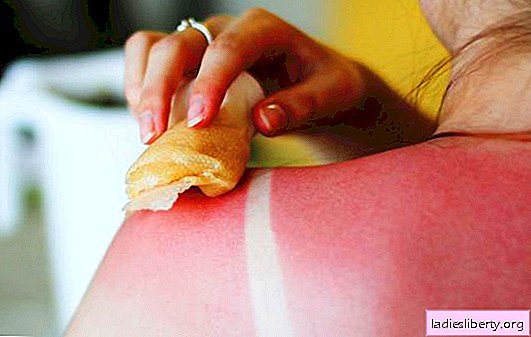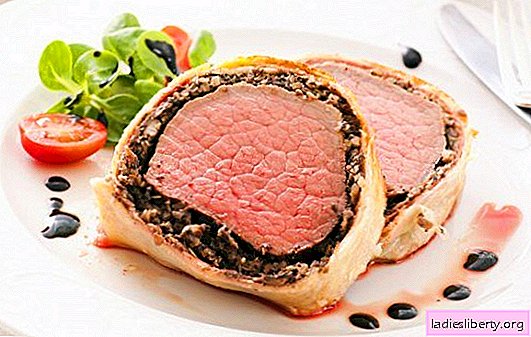
Summer is a favorite time of the year for most people. But, unfortunately, the bright summer sun can give not only a good mood, but also a sunburn.
How to avoid this unpleasant consequence of prolonged exposure to the sun and how to alleviate your condition if a burn has already been received?
General information about sunburn
Sunburn is a lesion of the skin with natural or artificial ultraviolet rays. Long-term exposure to UV rays on the skin, provokes inflammation of the skin. This reaction of the body can be caused by a visit to the solarium, a long stay in the sun or other sources of ultraviolet radiation.
The most dangerous burns from ultraviolet rays are damage to the face and eyes. Facial skin is a thin, pampered shell. Moreover, a person’s face is open at any time of the year, and even more so in the summer, when the scorching, hot sun can do him maximum harm. Decorative cosmetic products for the face do not carry a protective function and are not an obstacle to the penetration of ultraviolet rays. Facial skin, which is regularly exposed to UV radiation, begins to age faster.
Eyes, as well as facial skin, are always in an unprotected state. A burn of the mucous membrane of the eye can lead to cataracts or a significant decrease in vision. If in the summer people try to protect themselves from sunlight by putting on hats and sunglasses, then in winter these safety measures are greatly neglected, so the chance of getting an eye burn in winter is more than ever.
Who is prone to get a sunburn?
Each person has an individual color of skin, hair, eyes. That is why someone can stay under the scorching sun for a long time and without consequences, and someone gets a burn of 30 minutes on the beach.
It's all about the color type of each person. The sensitivity of the skin to ultraviolet and its response to prolonged exposure to UV rays depends on the color type.
First type characterized by light or red shades of hair and fair skin. People with the first color type are advised to avoid any interaction with the sun, as their skin burns even from short-term exposure to UV rays. It should be noted that the skin of such people is not able to acquire a tan.
People with second type, have a darker skin and light brown shade of hair, but they are also prone to instant sunburn. You can purchase a tan, observing all the rules of protection.
Third type characteristic of Europeans. Such skin can acquire a beautiful shade of tan.
People fourth type have an olive skin tone and can be exposed to sunlight for a long time. They easily achieve a beautiful and deep shade of tan, which lasts for a long time.
People fifth type have dark skin and dark hair. They are not threatened by a sunburn. This type is characterized by a rich brown tan.
Sixth type characterized by very dark skin and a dark shade of hair. This appearance is inherent in Latin Americans. They are not afraid of a sunburn.
Also, it is necessary to exclude people from the sun who have the following diseases:
• Vitiligo syndrome
• Red systemic lupus erythematosus
• Albinism
• Pigment xeroderma
• porphyria
From the foregoing, it can be concluded that the chance of getting a sunburn is determined by the type of skin, knowing which, you can correctly choose for yourself the time spent under the influence of the sun.
Symptoms and signs of sunburn
A sunburn, like any other skin lesion, has obvious signs and symptoms that occur at different stages of the development of the lesion. Four stages of sunburn are distinguished:
In the first stage the skin becomes swollen and red. Pain occurs when touching the affected area of the skin, as well as a feeling of tooth, dryness, tightness.
For the second stage characterized by the appearance of edema and small watery blisters. At the same time, pain, redness and itching of the affected area are preserved. In the second stage, body temperature may increase slightly.
Third stage characterized by necrosis of affected skin. It should be noted that this degree of sunburn is extremely rare.
At the fourth stage, the skin begins to char to the bones. Affected areas take a black tint. The fourth degree of sunburn practically does not occur, but there was a place to be.
In addition to the above symptoms that appear at a particular stage, there are general ones that, one way or another, can occur during a sunburn:
• Chills
• Increased body temperature
• A noticeable convergence of the skin with a film, some time after a burn
• Blisters
• Nausea
• Vomiting
• redness
• Itching
• pain
A sunburn is not as harmless as it seems. Long exposure to sunlight may lead to the following consequences:
• Loss of vision, decreased quality of vision (with eye burn)
• Allergy to ultraviolet radiation
• Sunstroke
The severity and severity of the acquired symptoms depends directly on the type of skin, the length of stay under the influence of sunlight, the protection of the skin by various means against sunburn, and medications that a person takes.
It is important to know that the first signs of sunburn do not appear instantly, so it is important to independently calculate the time spent in the sun, based on your skin type and the degree of protection chosen.
Knowing the first signs and symptoms of a sunburn, you can quickly respond and proceed to first aid to the victim in order to alleviate his condition and avoid the effects of a burn with ultraviolet radiation.
First aid for sunburn at home
When identifying the first burn, it is important to know how to properly provide first aid to the victim (or yourself), because the seriousness of the consequences and the condition of the person depend on this. So, with a sunburn, you must perform the following algorithm of actions:
1. Leave off the UV exposure.
Simply put, go to a closed and cool place (room, tree shade).
2. Determine the degree of sunburn
It is not necessary to know all the symptoms, the presence of water blisters is an indicator of the severity of the burn. In this case, it is necessary to call an ambulance team and get the help of specialists in order to avoid consequences.
3. Cooling, moisturizing, anesthesia
It is necessary to make lotions with cold water to the affected areas of the body, take a cool bath, moisturize the skin with special creams and aerosols, take painkillers.
Sunburn treatment at home
The first step is to cool the skin. For these purposes, ordinary cold water is perfect, but you can also use black or green tea, antiseptic solutions. It is strictly forbidden to use ice, take a cold shower. Instead, it is best to take a cool bath.
After cooling, the skin should be immediately moistened using special creams or aerosols intended for first aid in case of sunburn. If you can’t use the above methods, you can lubricate the affected skin with sour cream, egg white, milk, kefir, potatoes or a leaf of cabbage.
The last step in first aid for sunburn is pain relief. For this purpose, you can take any pain medication and antihistamines.
How to prevent sunburn?
You don’t have to treat anything if you know how to prevent this or that disease. The measures to prevent sunburn include the following:
• Exclude being in the sun from 11:00 to 17:00
• Prefer closed clothing, wear sunglasses, hats
• Do not sleep in the sun
• Use protective creams and aerosols from sunburn
Adhering to the above recommendations for the treatment and prevention of sunburn at home, you can avoid unpleasant consequences and maintain your health. The main thing is to study your individual characteristics and correctly select the duration of exposure to the sun.











